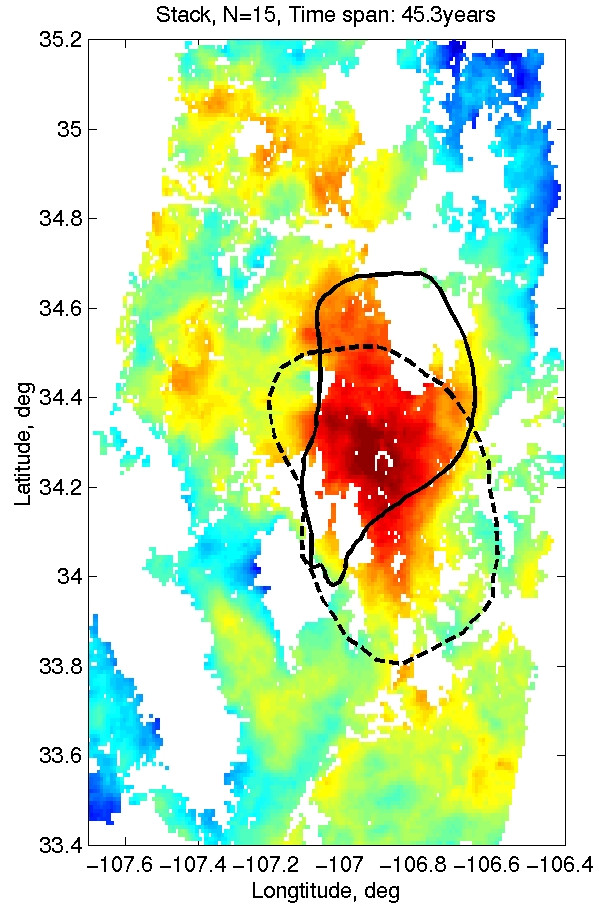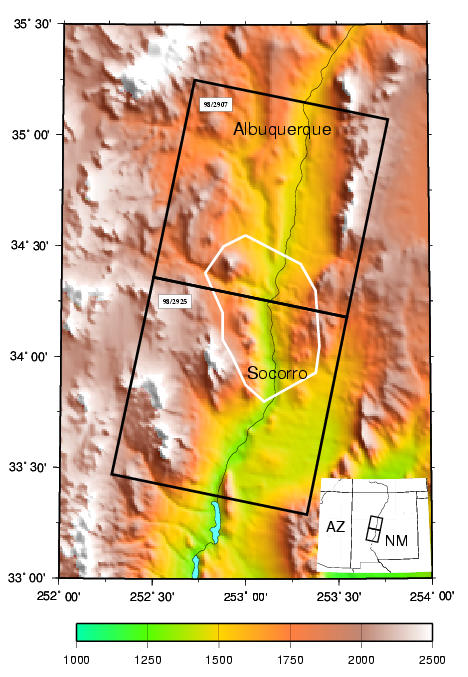Crustal uplift due to inflation of the Socorro Magma Body, New Mexico
Area of Socorro, New Mexico, is one of the most geophysically anomalous examples of the Earth's coninental crust. It is located on the intersection of the Rio Grande rift (one of the four largest active continental rifts in the world) and the Socorro fracture zone. This area is expressed in high seismicity (follow this link for details about the Socorro seismic anomaly), elevated topography (see digital elevation map on the left), and electric conductivity anomaly in the middle crust. Perhaps the most spectacular geophysical feature of the Socorro crustal block is the presence of an unusual seismic reflector at depth of ~19 km, established based on studies of local microseismicity, and deep seismic souding using active sources. The outline of the Socorro reflector, as determined by the most recent seismic study, is denoted by a white line in the figure on the right. Several leveling surveys conducted in the Socorro area between 1911-1981 revealed a broad crustal uplift directly above the crustal reflector. The measured uplift rate is a few millimeters per year in the center of the anomaly. Available geomorphologic data indicates that the crustal uplift may have continued in Socorro at a similar rate for the last several tens of thousands of years. These geophysical data have been interpreted as indicating the presence of a large sill-like magma body in the middle crust beneath the Rio Grande rift. The estimated volume of the Socorro magma body is at least several thousand cubic kilometers. Because the available leveling data are too sparse in space and time, the spatial correlation between the uplift and the inferred magma body, as well as the inferred constancy of the uplift rate have been uncertain. We investigate displacements of the Earth surface above the Socorro magma body using InSAR. Figure on the left shows a stack of 14 interferograms covering a time period between 1992 and 2000. Colors denote the average satellite line-of-sight displacement rate in centimeters per year. The red anomaly most likely reflects magmatic inflation of the Socorro magma body at an average rate of 2-4 mm/yr during 1992-2000. Black lines in the left figure show the extent of a mid-crustal reflector as determined by two seismologic studies (dotted line, Rinehart and Sanford, 1981, and solid line, Balch et al., 1997). |
|
 |
This material is based upon work supported by the National Science Foundation under Grant No. 0208165. Any opinions, findings, and conclusions or recommendations expressed in this material are those of the author(s) and do not necessarily reflect the views of the National Science Foundation. |
